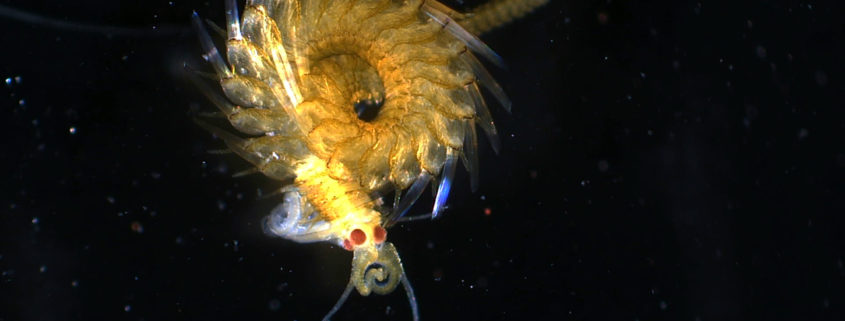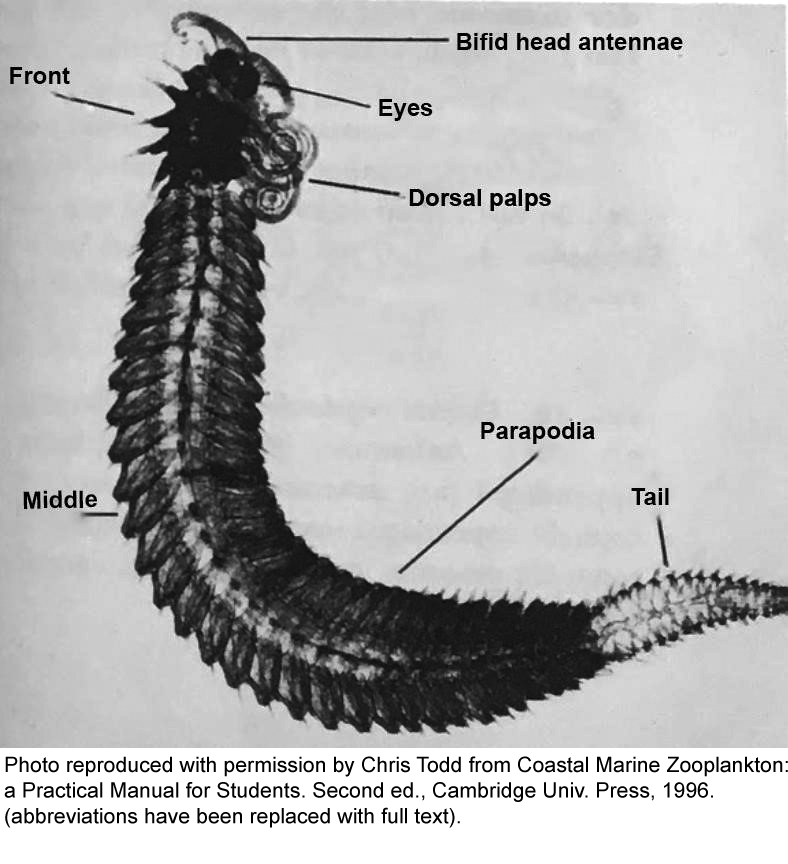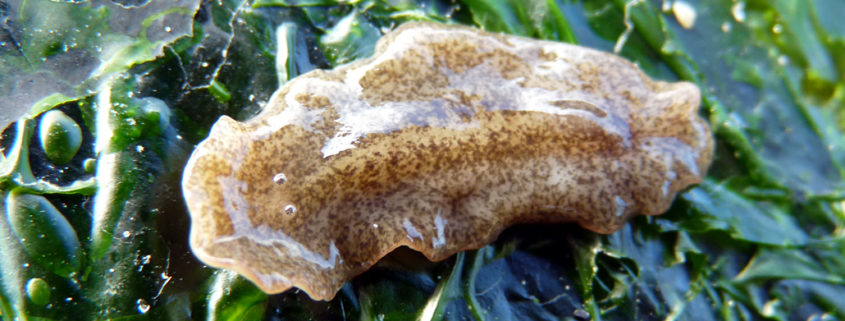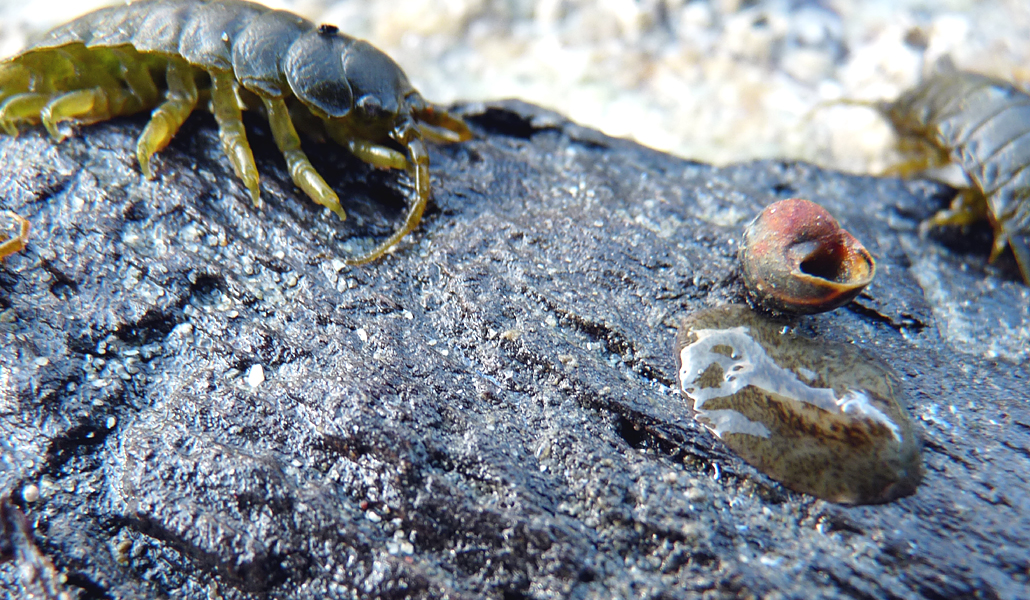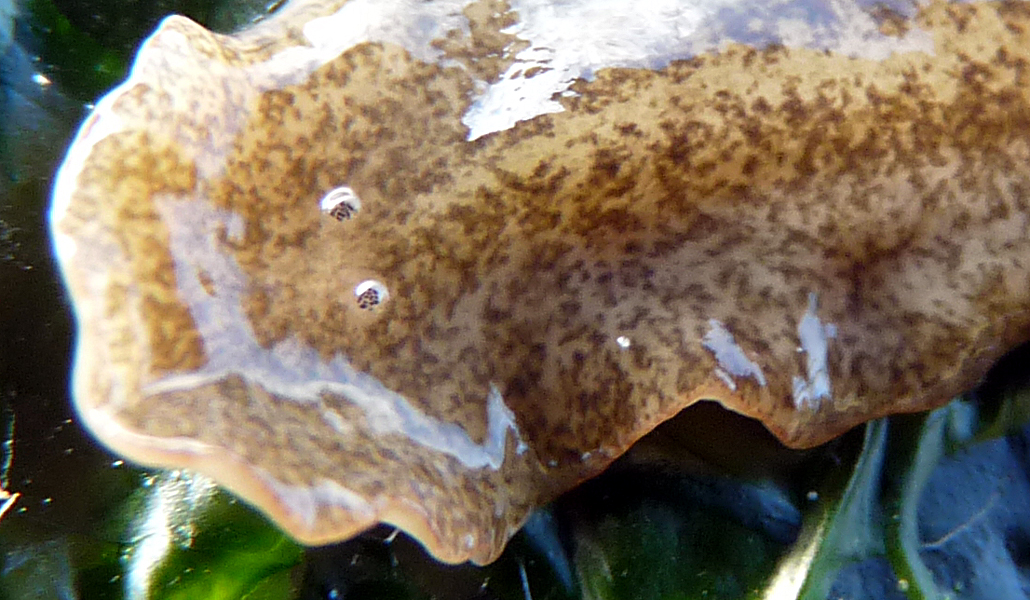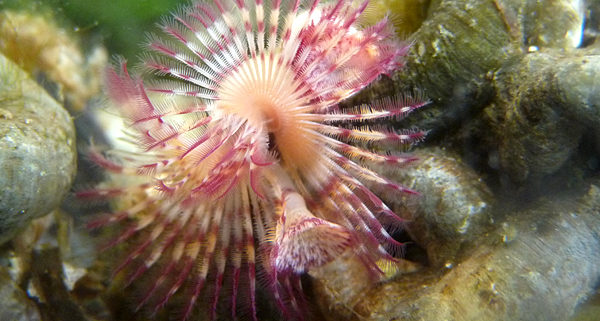Proceraea prismatica
Author: Isaac Hatfield
Size range: 5-25 mm in length with up to 105 segments
Colour: Yellow or pale green with 3 dark lines down back and dark red tips of antennae and cirri.
Kingdom: Animalia
Phylum: Annelida
Class: Polychaeta
Order: Phyllodocida
Family: Syllidae
Genus: Proceraea
Species: P. prismatica
Identifying Features: Proceraea prismatica are in the class Polychaeta, marine worms with lobes hanging off each segment with many bristles, called chaetae, attached. Polychaetes can live in a variety of marine environments including hydrothermal vents, coral reefs, and the open ocean. They can also withstand extreme temperatures and conditions. The family Syllidae is made up of small, carnivorous marine worms with long dorsal hairlike appendages called cirri and an eversible pharynx with either one single tooth or a trepan of teeth connected to a gizzard. They have a rounded head usually with four large eyes and three antennae. Proceraea prismatica have four red eyespots in a square formation and four hairlike tentacles called cirri on the first segment of their body. Cirri are also present mid-body and dorsally. Antennae are present at front and middle and triangular parts stick out from neck. Larger parapodia, lateral projections along body, are present on males. Their large eyes are not adapted for locating prey, rather for locating females for mating or migration. The P. prismatica has a trepan of 9 large and 9 small teeth. Long pharynx at back with 9 weak sensory receptors.
Habitat and distribution: On algae, sponges, and muddy or sandy ocean floors in intertidal zone to as deep as 700 m in Arctic, North Pacific, and North Atlantic to English Channel.
References:
Fabricius. (1780). Proceraea prismatica. Retrieved November 23, 2018, from http://species-identification.org/species.php?species_group=macrobenthos_polychaeta&id=863
Grube. (1850). Syllids (Family Syllidae). Retrieved November 23, 2018, from http://species-identification.org/species.php?species_group=macrobenthos_polychaeta&selected=beschrijving&menuentry=groepen&record=Syllidae
Todd, C.D., et al. Coastal Marine Zooplankton: a Practical Manual for Students. Second ed., Cambridge Univ. Press, 1996.
Waters, E. F. (2015, July 01). 14 Fun Facts About Marine Bristle Worms. Retrieved November 23, 2018, from https://www.smithsonianmag.com/science-nature/14-fun-facts-about-marine-bristle-worms-180955773/


